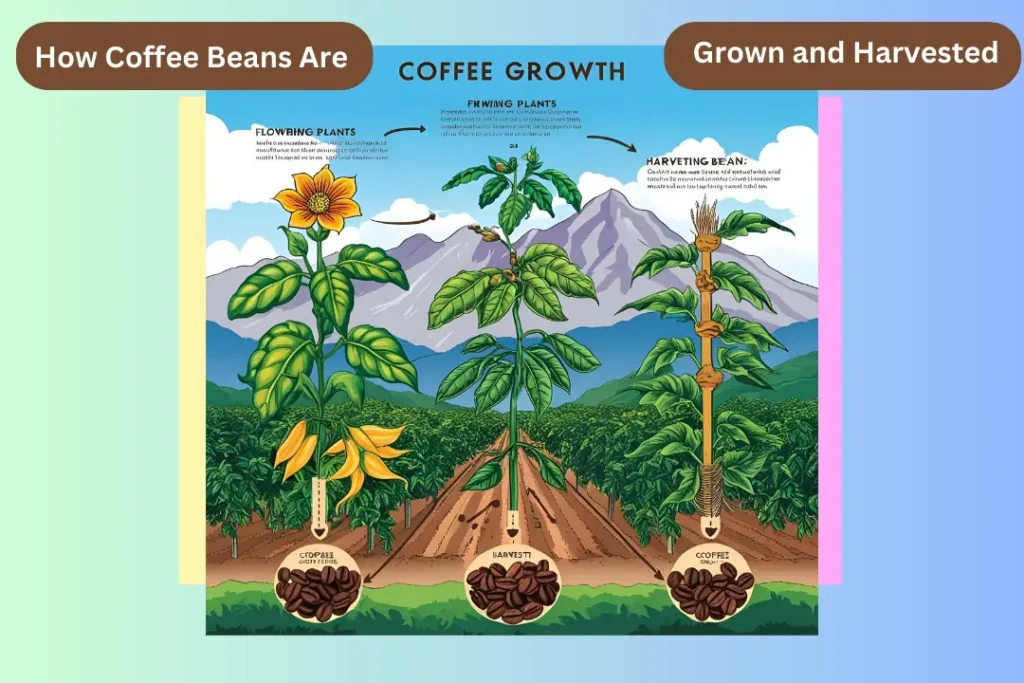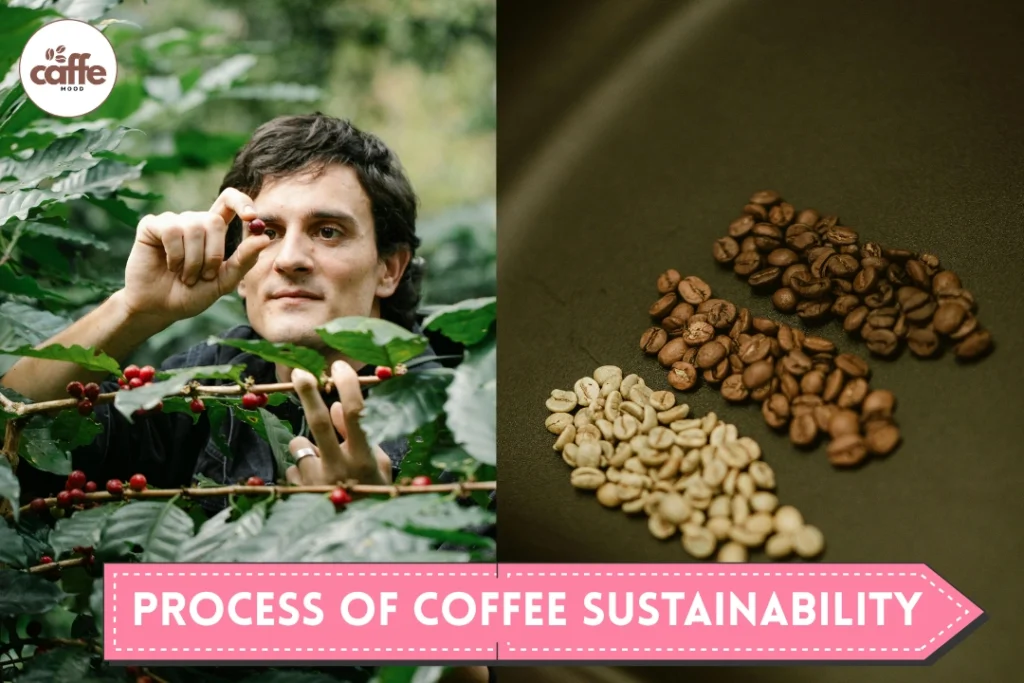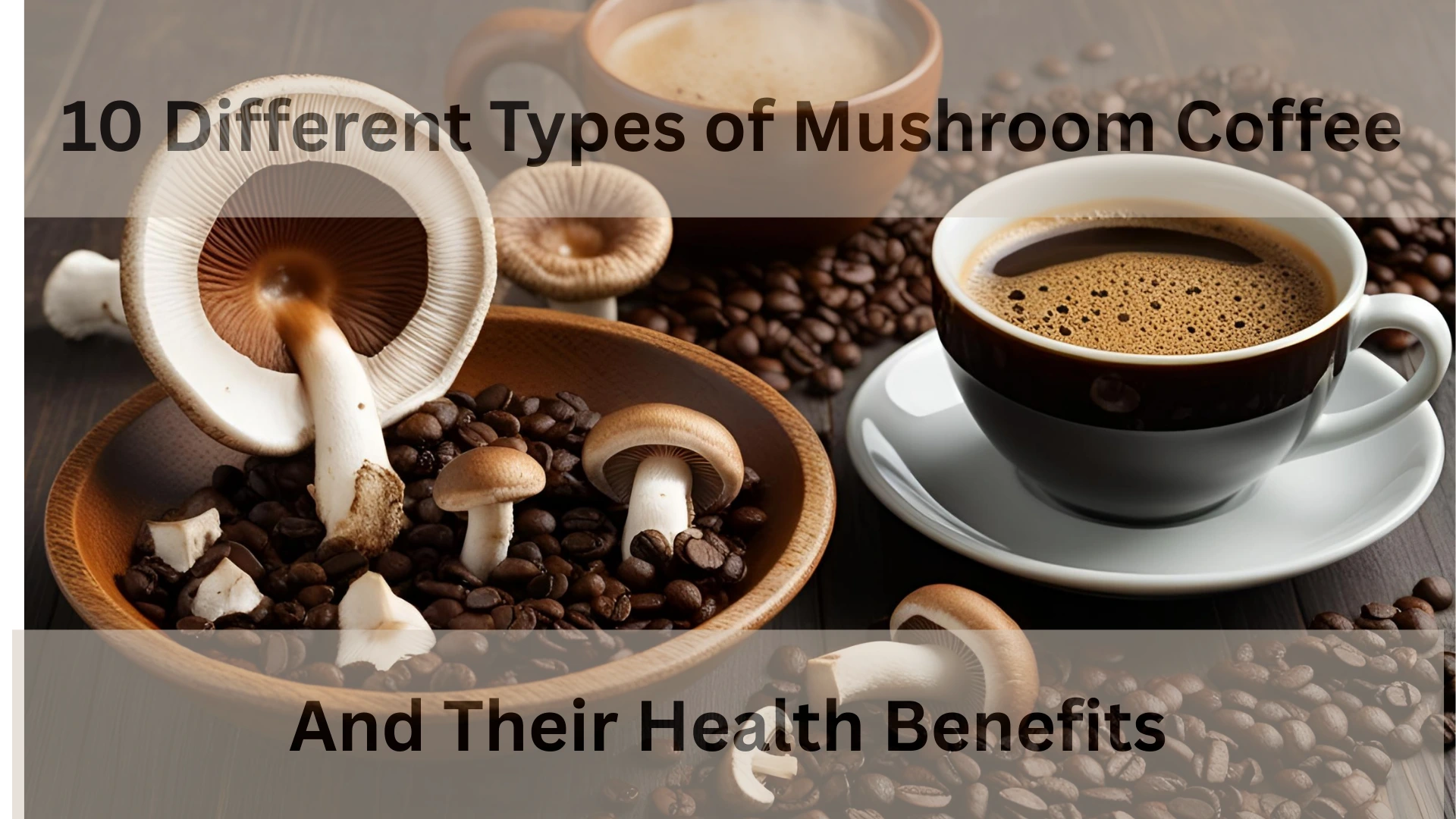
Coffee is more than just a drink—it’s a passion, a ritual, and a daily indulgence for millions of people worldwide. For coffee enthusiasts, the key to brewing the perfect cup is understanding the science behind coffee beans. It also involves knowing how different variables come into play during the brewing process. Additionally, preserving the freshness of your coffee is essential.
From bean choice to brewing technique, the smallest details can significantly impact the flavor of your coffee. In this post, we’ll explore how origin and freshness contribute to crafting the perfect cup. We will also discuss grind size and brewing techniques and the science behind coffee beans.
Table of Contents
How Coffee Beans Are Grown and Harvested?
Science Behind Coffee Beans begins with its growth on coffee trees, often in tropical regions around the world. These regions offer the ideal environment for growing coffee beans, with the right combination of temperature, altitude, and rainfall.

- Growing Conditions: Coffee trees thrive in areas that are between the Tropics of Cancer and Capricorn. In these locations, the climate remains relatively constant throughout the year. These regions often have high altitudes, cool temperatures, and consistent rainfall, which contribute to the beans’ flavor profile. The terror of the region significantly affects the beans’ flavor. It is a combination of soil, climate, and cultivation practices.
- Arabica vs. Robusta: There are two primary species of coffee beans: Arabica and Robusta. Arabica beans are known for their smooth, fruity flavors and higher acidity. They grow at higher altitudes. Arabica beans are typically cultivated in regions like Latin America, Africa, and Asia. Robusta beans, on the other hand, are more resilient. They are often found in lower altitudes. Robusta beans produce a stronger, more bitter flavor with a higher caffeine content. Understanding the differences between these two species is essential when selecting beans.
- Harvesting Coffee: Harvesting coffee is a labor-intensive process. Coffee cherries are hand-picked when they reach optimal ripeness, ensuring the best flavor extraction. There are two main ways of harvesting. The first is selective picking, where only ripe cherries are picked. The second is strip picking, where all the cherries are harvested at once, regardless of ripeness. Selective picking typically yields higher-quality beans, as it allows only the ripest cherries to be used.
Coffee Science Experiments You Need To Know
The Role of Coffee Bean Processing in Flavor Development
After the coffee cherries are harvested, the next step is processing the beans. This stage plays a crucial role in determining the final flavor of the coffee. There are several ways of processing coffee beans. Each impacts the flavor profile in distinct ways. This describes how the science behind coffee beans works.
- Washed (Wet) Processing: In washed processing, the outer cherry skin is removed before the beans are dried. This method is known for producing cleaner, brighter flavors, with a noticeable acidity. Washed coffees often have more pronounced fruity, floral, or citrus notes, highlighting the unique characteristics of the coffee’s origin.
- Natural (Dry) Processing: With natural processing, the whole cherry dries in the sun. Then, the beans are extracted. This method often results in a fuller-bodied coffee with pronounced sweetness and fruity flavors. Naturally processed beans have more complex flavor profiles, ranging from berry-like notes to deep tropical fruit flavors.
- Honey (Pulped Natural) Processing: Honey processing is a hybrid method that combines aspects of both washed and natural processing. After removing the outer skin of the coffee cherry, the beans are left with mucilage. The mucilage is the sticky layer surrounding the bean, which is allowed to dry. Honey-processed coffees often have a balanced flavor profile, with a combination of sweetness and acidity. The result is a coffee that is both fruity and creamy, with a medium to full body.
The Impact of Roast Level on Coffee Flavor
Once the beans are processed and dried, the next crucial step in flavor development is roasting. Roasting transforms the raw, green coffee beans into the brown beans that are used for brewing. The science behind coffee beans’ roast level influences the coffee’s flavor, aroma, and body.
- Light Roasts: Light roasts have a light brown color. They lack an oily sheen on the surface of the beans. These roasts preserve the distinct flavors of the coffee’s origin, often with bright acidity and fruity or floral notes. Light roast coffees highlight the unique terroir of the growing region. They are ideal for coffee enthusiasts who want to explore the diverse flavor profiles of single-origin coffees. A light roast is typically roasted to an internal temperature of 356°F to 401°F (180°C to 205°C).
- Medium Roasts: Medium roasts are slightly darker than light roasts and balance acidity and body. The flavors of the coffee become more rounded and caramelized, with notes of chocolate, nuts, or toffee. Medium roasts are the most versatile and are enjoyed by a broad range of coffee drinkers. A medium roast is typically roasted to an internal temperature of 410°F to 428°F (210°C to 220°C).
- Dark Roasts: Dark roasts are the darkest coffee beans, with a rich, bold flavor profile and low acidity. The extended roasting process results in deeper caramelization, producing flavors like chocolate, molasses, or a smoky, roasted character. Dark roasts are popular for espresso, as they provide the strong, intense flavors necessary for a rich, full-bodied shot. Dark roasts are typically roasted to an internal temperature of 437°F to 482°F (225°C to 250°C).
The Science Behind Coffee Beans’ Freshness: Why It Matters?
Freshness is a key factor in brewing great coffee. Over time, coffee beans lose their essential oils and aromatic compounds, leading to a loss of flavor. Here’s why freshness matters and how you can guarantee your coffee remains flavorful for as long as possible.
- Roast Date: One of the most important indicators of freshness is the roast date. Freshly roasted beans should be used within a few weeks of roasting to enjoy the optimal flavor. As coffee beans age, they start to lose their aromatic compounds, resulting in a stale, flat cup of coffee. When buying coffee, always check the roast date to guarantee you’re getting the freshest beans.
- Grinding Coffee Beans: Grinding coffee beans just before brewing is one of the best ways to preserve freshness. Once coffee beans are ground, they start to oxidize and lose their flavor more rapidly. To keep peak flavor, invest in a good-quality burr grinder and grind your beans just before brewing. The grind size should match your brewing method to achieve optimal extraction.
- Storage: Proper storage is essential to maintaining the freshness of your coffee beans. Beans should be kept in an airtight container away from light, moisture, heat, and air. Coffee beans are porous and can absorb odors from their environment, which can impact flavor. To keep freshness, store your beans in a cool, dark place. Freeze them only if necessary.
How to Make Coffee the Science Behind the Bean ?
The brewing technique you use also plays a significant role in the flavor of your coffee. From French press to espresso, different brewing ways extract flavors in distinct ways. Let’s look at some popular brewing approaches and the factors you need to consider for optimal extraction.

Espresso: Espresso brewing requires finely ground coffee and high pressure to extract a concentrated shot of coffee. The key to a great espresso is consistency in grind size, tamping, and brew time. The best espresso beans are often dark roasted to create the full-bodied, rich flavor that is characteristic of espresso.
- Contains five (5) Boxes of 10 Peet’s Nerissimo, French Roast style Espresso – Intensity 11 Dark Roast Coffee Single Cup …
- Flavor and Roast: Dark Roast – Intensity 11. A bittersweet indulgence in the French Roast style – black as night, sweet …
- Peet’s Espresso Capsules are compatible with the Nespresso Original Machines*, Essenza Mini, Essenza Plus, Pixie, CitiZ,…
Pour-Over: Pour-over brewing allows for more control over the brewing process, resulting in a cleaner cup of coffee. Use medium to light-roast beans for this method, as it highlights the coffee’s origin and flavor complexity. Make sure to use freshly ground beans and a gooseneck kettle for precise pouring to guarantee even extraction.
- EXPERIENCE PERFECTION EVERY TIME: Coffee aficionados agree; pour over brewing delivers the best cup of coffee. With Bean…
- COMPLETE POUR OVER COFFEE DRIPPER: Perfect for the coffee connoisseur that appreciates richer, bolder flavors and the un…
- SUPERIOR QUALITY: Carefully crafted with thick and durable heat resistant non-porous Borosilicate glass which won’t abso…
French Press: French press brewing requires a coarse grind and a longer steeping time. This method produces a full-bodied cup with rich flavors and a thicker mouthfeel. Medium to dark roasted beans work well with French press, as the brewing process extracts deep, bold flavors.
- FLAVOR EXTRACTION: Dive into a world of rich taste with every brew using our French Press coffee maker. It’s designed to…
- EASY TO USE: Simplicity at its finest. Its sturdy handle and easy press function take the hassle out of brewing, add cof…
- FILTRATION SYSTEM: Experience a smooth, sediment-free brew with our 4 level filtration system. It’s designed to trap the…
Describe the Science behind the Coffee Tasting Process.
it is more intriguing than you expect! Many of us are not tasting coffee with our tongues alone. It’s a full-sensory experience combining aroma, flavor, mouthfeel, and — yes — sound. Your nose is the first stop — around 80 percent of what we “taste” is smell. When the coffee is brewed and brought to your lips, it releases volatile compounds. These trigger olfactory receptors and send signals to your brain. Then your tongue goes to work, sensing fundamental tastes like sweet, sour, bitter, salty, and umami.

In the meantime, your brain is toying with the coffee’s body. This refers to how heavy or light it feels. It also considers the acidity, which is the brightness or tang, and the aftertaste. This whole process is known as cupping. In the professional world, it allows baristas and roasters to assess quality and consistency. The taste of that cup is influenced by several factors. These include temperature, brewing method, and grind size. It is also shaped by how your brain recognizes it. Each time you take a sip of coffee, you experience a small chemistry experiment. Your senses help direct this experiment. It’s science and pleasure mixed in, literally! Knowing this process helps you appreciate coffee on a different level, turning every cup into a deeper, tastier experience.
Describe What the Process of Coffee Sustainability Looks Like?

It’s not simply a buzzword — it’s a promise to protect people, the planet , and the future of coffee. It starts on the farm with sustainable agriculture practices like shade-grown farming, organic farming, and responsible water use. It’s better to use fewer chemical pesticides. Protect biodiversity and look after the soil. This approach will guarantee the health of crops in the long term. But it’s also about investing in the people behind the beans. Sustainable development encompasses social elements, as fair wages, safe working conditions, and access to education and health care.
Eco-conscious roasting techniques, recyclable packaging, and carbon emissions reduction all come into play as beans move through the supply chain. Even consumers join by choosing fairly traded coffee, Rainforest Alliance, or Organic. When all those components start to align, you create a coffee industry that’s more ethical and less impactful. Ideally, it should be capable of delivering quality beans for generations to come. So the next time you take a sip of your morning brew, pause for a moment. Ponder the fact that real sustainability comes with every step in the journey. It starts from the seed and ends in your cup.
Conclusion: Mastering the Art of Coffee Beans
While choosing any beans produce a good cup of coffee. Yet, making the perfect cup requires an understanding of coffee beans. While choosing any beans produce a good cup of coffee. Nonetheless, making the perfect cup requires an understanding of coffee beans. An appreciation for the science is also essential. Every factor plays a part in what the end flavor will be. This includes the source of the beans, the roast, processing, and even the freshness. So Don’t skip to learn the Science Behind Coffee Beans and Different Brewing Techniques. Understanding the journey of a coffee bean will enhance your appreciation of every sip. This is true whether you’re a casual coffee drinker or a dedicated enthusiast.
These articles grab your interest:
- “Coffee Beans Uncovered: The Ultimate Guide to Types, Roasts & Flavors”
- “Unlock the Secrets of Coffee Espresso: How Origin, Roast & Processing Impact Flavor – A Complete Guide”
Recalling all the Coffee Lovers to join our Tiktok Community ;

Frequently Asked Questions (FAQs)
1. What is the science behind coffee beans and their flavor?
The science behind coffee beans explains how factors like origin, processing, and roasting affect their flavor. Each step in the journey from bean to cup influences acidity, aroma, and taste.
2. How does brewing impact the science behind coffee beans?
Brewing methods play a crucial role in the science behind coffee beans by altering extraction levels, acidity, and body. Different techniques, like espresso or pour-over, bring out unique flavors.
3. Why is freshness important in the science behind coffee beans?
Freshness is key in the science behind coffee beans because oxidation and aging affect taste. The fresher the beans, the more vibrant and aromatic your coffee will be.
4. How does the origin of coffee affect the science behind coffee beans?
The science behind coffee beans shows that soil, climate, and altitude impact bean quality. Coffee from Ethiopia tastes fruity, while beans from Sumatra are more earthy and bold.
5. What role does roasting play in the science behind coffee beans?
Roasting is a major factor in the science behind coffee beans because it transforms raw beans into flavorful coffee. Light roasts retain more acidity, while dark roasts develop bold, smoky flavors.








